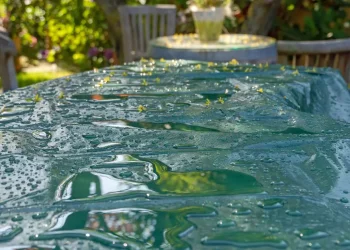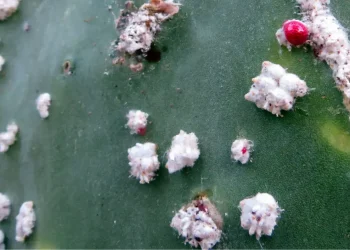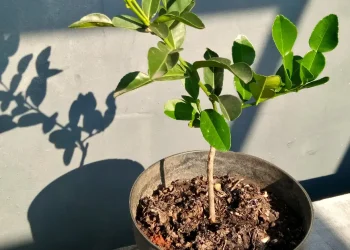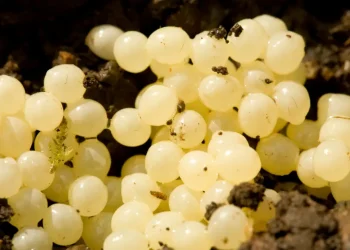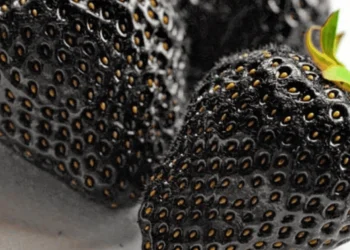Pesticides are not a novelty. People used pesticides since the beginning of the Bronze Age and maybe even way before. The first known pesticide farmers used, even before 2000 BC, was sulfur. In the following centuries, they experimented with different chemicals and elements. But chemical pesticides, as we know them today, can be traced back to the early 19th century.
To sum it up, pest control methods have progressed a lot since then. Although we still don’t have a pesticide that would be lethal for pets but 100% safe for us, research is moving forward at an incredible pace.
There are a lot of things there is to learn about pests and pesticides. What is the most commonly used pesticide or most common pests encountered in gardens? And can pesticides be washed off?
On this page, you’ll find all the key stats and information you need to know about pests and pesticides in 2023.
- Are the Majority of Insects Pests? What Percentage of Pests are Harmful to a Garden?
- Are there Fewer Pests Now?
- What Percentage of Crops are Lost to Pests?
- How Much of the World use Pesticides and How Much Pesticides are used Each Year?
- Which Country uses the Most Pesticides?
- What Percentage of Households and Home Farmers use Pesticides?
- What Industry uses the Most Pesticides?
- How Much is Spent on Pesticides Annually?
- Are Some Pesticides 100% Safe?
- How Many People are Affected by Pesticides Each Year?
- Does Washing Fruit and Vegetables Remove Pesticides?
- Are Pesticides Killed by Cooking?
- Are there any Effective Pesticide Alternatives?
Are the Majority of Insects Pests? What Percentage of Pests are Harmful to a Garden?
No, barely 1% of all insects in the world are considered pests.
There are more than one million identified insect species in the world, and every year, about 7,000 new species are discovered. From that, only about 70,000 are considered as pests.
The term pest is used to describe any organism harmful to humans or crops, so mosquitoes or rodents are also considered pests. So not all insects are pests, and not all pests are insects.
And it’s very hard to estimate the percentage of garden pests from other species considered as pests. There are simply too many organisms considered pests (from mosquitoes through fungi to weeds) that the answer cannot be given definitely, and I don’t presume to guess.
Sources: University of Nebraska, Nature. ScienceDirect.
Are there Fewer Pests Now?
Not only pests but the population of insects declines altogether. Research indicates an estimated annual decline of 0.92% in the overall insect population. Pests are affected at a slower rate, with a decrease of 0.65% per year.
However, the decline primarily impacts pests other than those harmful to gardens. As the study suggests, crop-eating pests do not have that many natural enemies to see a sharp decline in population.
What Percentage of Crops are Lost to Pests?
The impact of pests on crop production is substantial. Annually, between 20% to 40% of global crop yields are lost to pests.
Plant diseases and invasive insects take a significant toll on the global economy as well. Plant diseases alone result in approximately $220 billion in economic losses each year, while the damages caused by invasive insects amount to around $70 billion.
These figures are comparable to the losses caused by drought. Over 34 percent of crop and livestock production is lost to drought, costing the economy over $34 billion.
Sources: Food and Agriculture Organization, National Institute of Food and Agriculture
How Much of the World use Pesticides and How Much Pesticides are used Each Year?
Approximately 1.8 billion people worldwide, nearly 23% of the world’s population, rely on pesticides to safeguard the quality and quantity of their food and commercial yields.
The scope of pesticide application is substantial. In the year 2021 alone, approximately 3.54 million metric tons of pesticides were utilized globally for agricultural purposes.
Notably, the utilization of pesticides continues to grow. Here’s a full breakdown of pesticide use growth over time.
Sources: Pesticides Use and Exposure Extensive Worldwide, Statista
Which Country uses the Most Pesticides?
Brazil, by far, uses the most pesticides among countries, with over 719 thousand metric tons every year. That’s nearly half as much as the USA, which holds second place.
It’s worth noting that due to limited available data, China’s position remains uncertain, and it’s possible that China dominates the ranking in annual pesticide usage.
Sources: Statista, Food and Agriculture Organization
What Percentage of Households and Home Farmers use Pesticides?
According to a recent survey, a notable 75 percent of U.S. households have used at least one pesticide product over the past year.
Interestingly, this pattern is even more prevalent in low-income homes. A study reveals that within these homes, the use of pesticides is even more common due to poor housing conditions and frequent pest infestations.
Among home gardeners and farmers, 32% use pesticides. Intriguingly, over half of these individuals opt for glyphosate-based pesticides. Furthermore, engagement with pesticides is nearly universal among surveyed market gardeners, where 100% of these small-scale farmers utilize pesticide practices.
Sources: US Environmental Protection Agency, BMC, University of Sussex, Pesticides Use Practice by Market Gardeners
What Industry uses the Most Pesticides?
Agriculture stands out as the leading user, accounting for nearly 90 percent of pesticide usage. The remaining pesticide usage is distributed among industries, commercial ventures, government entities, and home and garden applications.
Nearly all pesticides used within the agriculture sector (90%) are herbicides.
Sources: Pesticides Industry Sales and Usage
How Much is Spent on Pesticides Annually?
In 2021, the global pesticides market reached a substantial value of nearly 218.24 billion US dollars. Looking ahead, the market is projected to expand even further, with expectations for it to reach nearly 130.7 billion dollars by the end of 2023.
A forecast regarding the whole agricultural chemicals market predicts the market to reach an impressive 279.12 billion dollars by 2030. That market is dominated by fertilizers, but pesticides are very noticeable.
The household pesticide industry also plays a significant role, with a valued market of $1.5 billion.
Sources: Pesticide Atlas, Freedonia Group, Statista
Are Some Pesticides 100% Safe?
There’s no pesticide that would be 100% safe. Pesticides are designed to be toxic to pests, and with that also comes toxicity to pets or humans.
However, pesticides usually represent only a minor risk to the not-targeted groups, especially when you follow instructions on the package. Herbicides won’t usually harm insects as well as pesticides won’t usually do much harm to humans or dogs and cats. But it is still very important to proceed with caution.
Sources: Current status of pesticide effects on environment, human health, WHO
How Many People are Affected by Pesticides Each Year?
There are an estimated 385 million cases of unintentional pesticide poisoning every year. This figure includes around 11,000 fatalities.
When considering the global farming population of approximately 860 million, this means that about 44% of farmers are poisoned by pesticides annually.
Geographically, the highest concentration of pesticide poisoning is observed in southern Asia, followed by south-eastern Asia and east Africa.
Many pesticide-related illnesses exhibit symptoms similar to common medical conditions. This can complicate diagnoses and treatment strategies but also supports claims from the previous section.
Sources: The global distribution of acute unintentional pesticide poisoning
Does Washing Fruit and Vegetables Remove Pesticides?
No method is 100% effective. But it does help remove pesticide residues.
The most efficient method to wash off pesticide from fruits and vegetables is to rub it under running water. Study shows that this method removes 73-99% pesticide residues, depending on the pesticide. Other researched methods were soaking and spraying with liquid. In comparison, the other methods removed only 23-65% of pesticides.
Sources: Comparison of Different Home/Commercial Washing Strategies for Ten Typical Pesticide Residue Removal
Are Pesticides Killed by Cooking?
Most pesticides are complex molecules that are not very heat-stable. But ordinary cooking won’t be able to reliably remove all traces of pesticides. It would require prolonged exposure to temperatures well over the boiling point.
It also highly depends on the pesticide used. For instance, boiling kale for ten minutes can remove up to 71% of indoxacarb, while low unit percentages, or even zero, of other pesticides. Blanching or stir-frying is even less effective.
However, when combined with thorough washing, you can effectively remove almost, if not every, pesticide residue.
Sources: Boiling, Blanching, and Stir-Frying Markedly Reduce Pesticide Residues in Vegetables, Science Focus
Are there any Effective Pesticide Alternatives?
As you can tell by the size of the pesticide market, pesticides are truly effective. And we still don’t have any alternatives that would match both efficiency and affordability.
While everybody can now buy products with a BIO label that ensures that the producer did not use pesticides or any other chemicals, it’s not really a scalable solution for the whole market.
But as a home gardener, you can reach for some pesticide alternatives such as natural pest repellents and deterrents. You can find more about this topic in my article regarding Non-Lethal Pest Solutions.
Conclusion
That’s it for my list of pest and pesticide statistics.
I put a ton of work into compiling this list of stats, and I hope you learned something new today.
And now it’s your turn:
Which statistic surprised you the most? Or is there any pesticide information I missed?
Either way, don’t hesitate to contact me.







